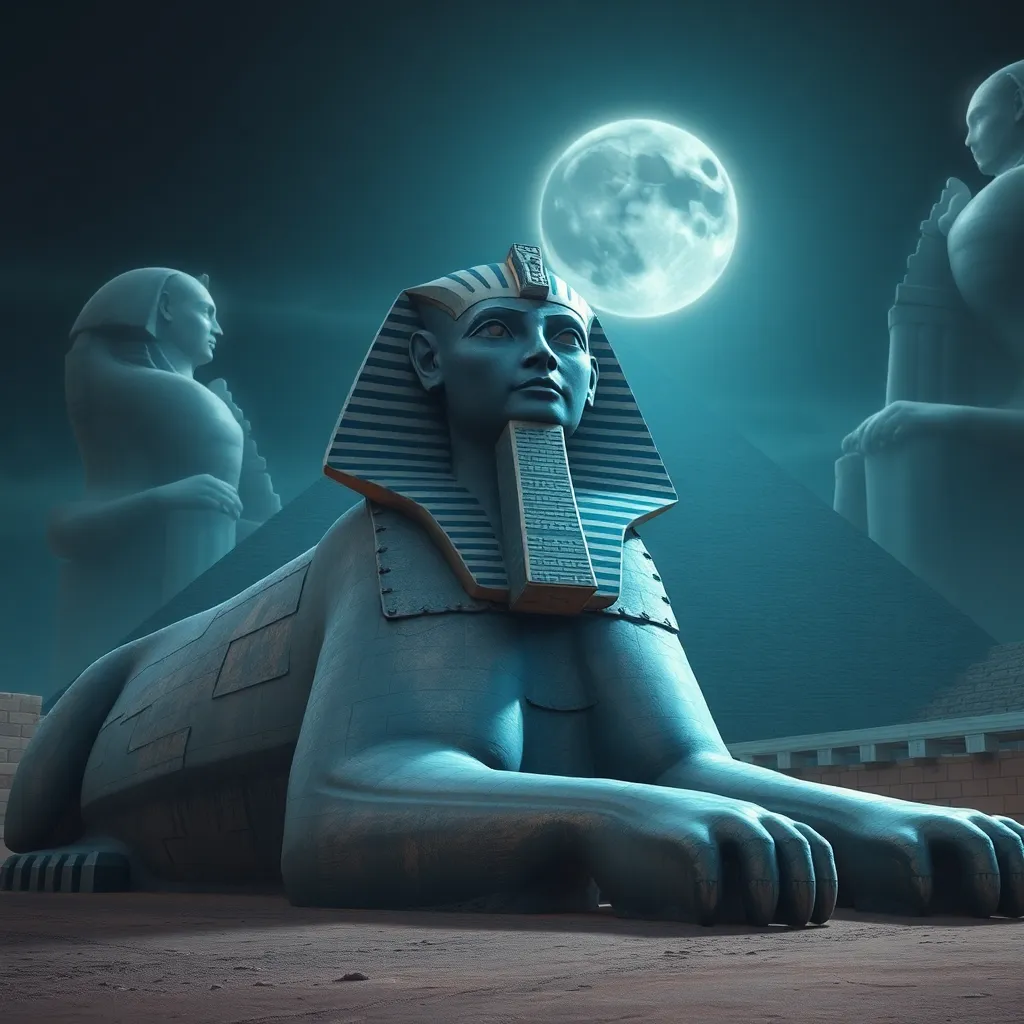The Enigmatic Sphinx: Guardian of Ancient Secrets
I. Introduction
The Great Sphinx of Giza is one of the most iconic monuments of ancient Egypt, capturing the imagination of historians, archaeologists, and tourists alike. With its lion’s body and human head, the Sphinx stands as a testament to the ingenuity of ancient Egyptian civilization and its rich mythology.
This article aims to explore the mysteries and meanings behind the Sphinx, shedding light on its historical context, architectural marvel, cultural significance, and the various theories surrounding its purpose.
II. Historical Context
A. The origins of the Sphinx in ancient Egypt
The Sphinx is believed to have been constructed during the reign of Pharaoh Khafre, around 2500 BCE. It is part of a complex of pyramids and temples on the Giza Plateau, which served as a necropolis for the pharaohs of the Fourth Dynasty.
Its exact origin is shrouded in mystery, with some theories suggesting that it may have been built earlier than Khafre’s reign, potentially dating back to the era of the Old Kingdom.
B. The role of the Sphinx in the context of the Giza Plateau
Situated near the Great Pyramid of Giza, the Sphinx was strategically placed to guard the tombs and serve as a symbol of strength and protection. It is thought to have played a significant role in the funerary practices of the time, acting as a sentinel for the afterlife.
The Sphinx’s alignment with the cardinal points also suggests that it had astronomical significance, possibly marking specific celestial events.
III. Architectural Marvel
A. Description of the Sphinx’s design and dimensions
The Great Sphinx measures approximately 73 meters (240 feet) long and 20 meters (66 feet) high, making it one of the largest and oldest monumental sculptures in the world. Its body is carved from limestone, while the head is believed to be originally coated with a finer material, possibly plaster or a hard stone.
B. Techniques used in its construction and the materials involved
The construction of the Sphinx required advanced engineering techniques and a significant labor force. The primary material used was the local limestone, which was quarried from the Giza Plateau itself. The Sphinx was carved directly from the bedrock, showcasing the skill of ancient Egyptian artisans.
- Use of simple tools like chisels and hammers
- Labor organization involving skilled workers and slaves
- Planning and alignment with the pyramids
IV. Symbolism and Cultural Significance
A. The Sphinx as a symbol of protection and guardianship
The Sphinx is often seen as a guardian figure, representing the pharaoh’s strength and divine protection over the land. Its imposing presence serves as a reminder of the power and authority of the ruling class.
B. Representation in Egyptian mythology and its connection to the sun god Ra
In Egyptian mythology, the Sphinx is associated with the sun god Ra, symbolizing the connection between the divine and the earthly realms. The lion’s body represents power, while the human head signifies intelligence and wisdom. This duality embodies the pharaoh’s role as both a ruler and a divine intermediary.
V. Theories of Purpose
A. Various theories regarding the Sphinx’s original purpose
Scholars and archaeologists have proposed several theories about the Sphinx’s purpose, including:
- A funerary monument for Pharaoh Khafre
- A symbol of royal power
- A site for spiritual rituals
B. Analysis of its function as a funerary monument or a site of worship
Some researchers believe that the Sphinx served as a funerary monument, protecting the pharaoh’s soul in the afterlife. Others suggest it may have been a site for worship, where ceremonies honoring the gods took place.
VI. The Sphinx and the Riddle of Time
A. The Sphinx in literature and popular culture
The Sphinx has captured the imagination of countless authors, artists, and filmmakers throughout history. Its enigmatic nature has become a symbol of mystery, leading to its portrayal in various works of literature, including:
- Oedipus Rex by Sophocles
- The Sphinx by Edgar Allan Poe
- Numerous films and documentaries exploring its secrets
B. The enduring mystery surrounding its age and the erosion patterns observed
The Sphinx’s age has long been debated, with some suggesting it predates the pyramids. Erosion patterns have led to theories of significant weathering, further complicating its dating. Geological studies indicate that water erosion may have played a role, suggesting a much older origin than previously thought.
VII. Modern Investigations and Discoveries
A. Archaeological studies and recent discoveries related to the Sphinx
In recent years, archaeological studies have unearthed new information about the Sphinx and its surrounding area. Excavations have revealed artifacts and structures that provide insight into its historical context and significance.
B. Technological advancements in understanding the Sphinx’s history
Modern technology, including ground-penetrating radar and 3D imaging, has allowed researchers to explore the Sphinx’s structure and surrounding terrain without invasive methods. These advancements are shedding light on its construction techniques and the possibility of hidden chambers.
VIII. Conclusion
The Great Sphinx of Giza remains a lasting legacy of ancient Egyptian civilization, symbolizing the cultural and historical richness of the era. Its enigmatic presence continues to captivate and intrigue people around the world.
As we reflect on the importance of preserving such ancient wonders, it becomes clear that the Sphinx is not just a monument of stone, but a keeper of secrets that links us to a remarkable past and inspires future generations to uncover the mysteries of history.




